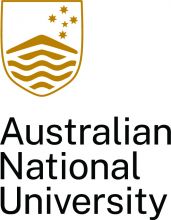Australia’s international education policies risk turning the country’s academic workforce into a shrinking monoculture by reducing universities’ capacity to recruit overseas staff, a leading economist has warned.
Richard Holden said the “revenue hit” from overseas student caps could convert Australian academia from a two-way international flow to a one-way exodus, with few foreigners arriving while home-grown scholars continued to venture offshore.
“That’s the scary scenario, and it’s entirely plausible – not in the short term, but over time,” said Professor Holden, director of the Economics of Education Knowledge Hub at UNSW Sydney.
“I worry about the outflows and also the lack of inflows. It will make it much harder for us to attract early career academics who often come…with a view to building a career here.”
He said the Australian National University’s planned A$250 million (£129 million) savings proposals exemplified likely developments elsewhere. Cuts of this magnitude would lead to the loss of “very good academics across the board”.
Professor Holden obtained his PhD at Harvard University and taught at the Massachusetts Institute of Technology (MIT) and the University of Chicago before returning to his native Sydney. He said UNSW’s economics faculty reflected the international nature of Australian academia.
Of 45 tenure and tenure-track academics, he said, only three were born in Australia. “Economics is a particularly international field. I’ve got colleagues who got their PhDs at Harvard and MIT and Princeton and the Toulouse School of Economics.”
Being competitive in the “global economics job market” was “really only possible with the revenue that comes from international students”, he said.
Australian universities cannot meet their staff costs from recurrent domestic income streams. The country’s 38 publicly funded universities spent about A$22.7 million on their employees last year and received A$19.9 billion from federal government grants and domestic undergraduate and postgraduate tuition fees, according to institutional accounts.
The sector also appears unable to meet its staffing needs from home-grown stock. Of about 50,000 people who said they worked as university lecturers and tutors in the 2021 census, only 52 per cent were born in Australia. Eleven per cent came from north-west Europe, with 8 per cent from north-east Asia, 7 per cent from southern and central Asia and the remaining 22 per cent from other regions.
Academia appears almost twice as diverse as Australia’s overall workforce, of which about one-quarter is overseas-born. “Australian academic ranks employ a diversity of staff, which fits longstanding patterns of academics moving country for employment,” said Gwilym Croucher, deputy director of the University of Melbourne’s Centre for the Study of Higher Education.
Professor Holden said the benefits of academia flowed both ways. In a recent report, he estimated that the value of UNSW’s scientific contribution to the “global stock of knowledge” was about A$2.2 billion, with 84 per cent of it generated overseas.
He rejected claims that the sheer numbers of overseas enrolments marred Australians’ time at university. “Those students bring revenue that gets you better faculty members who are able to provide a better educational experience for domestic undergraduates. I think that’s underappreciated. Losing thousands of international academics and researchers from Australian shores would be a major setback.”
UNSW science dean Sven Rogge said a loss of “viewpoints, expertise and experience” from overseas academics would “significantly hinder” efforts in fields including sustainability, artificial intelligence and climate risk.
Register to continue
Why register?
- Registration is free and only takes a moment
- Once registered, you can read 3 articles a month
- Sign up for our newsletter
Subscribe
Or subscribe for unlimited access to:
- Unlimited access to news, views, insights & reviews
- Digital editions
- Digital access to THE’s university and college rankings analysis
Already registered or a current subscriber?












